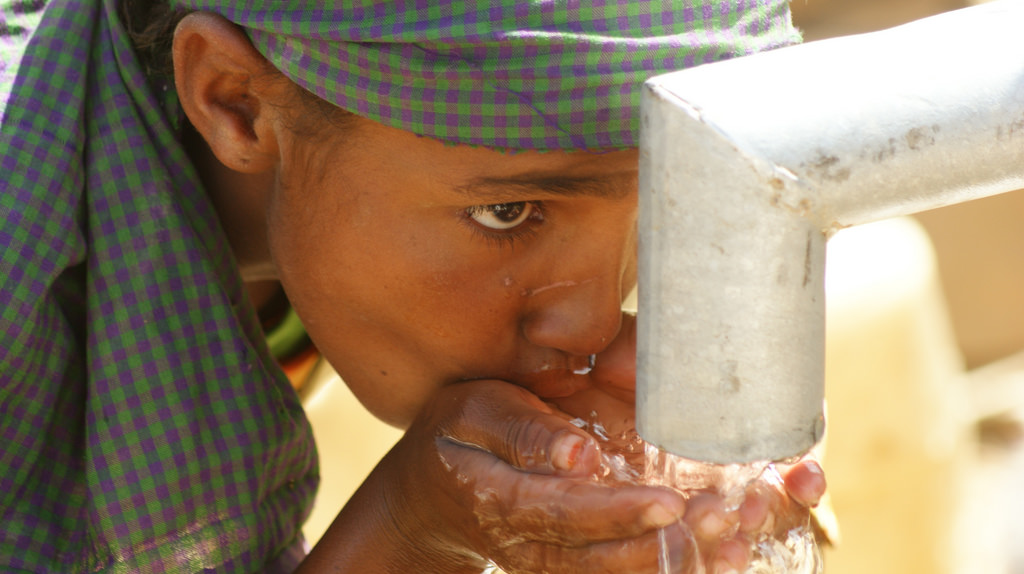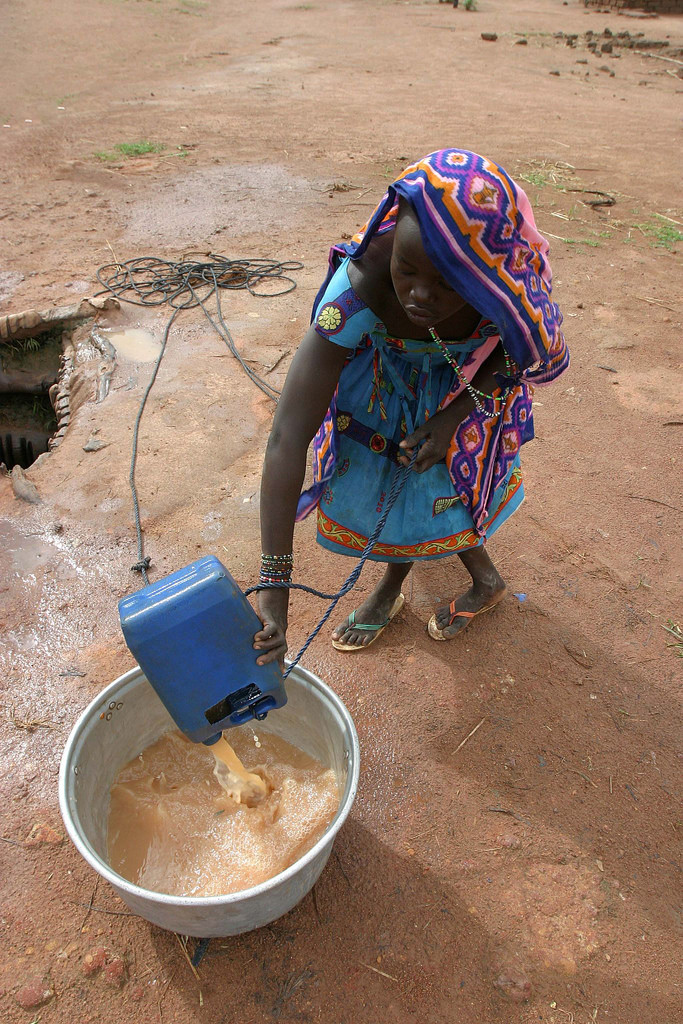Can you cut 1 Tonne of carbon pollution out of your life?
Take the challengeWater is fundamental to life! It is vital for more inclusive and sustainable development.
Many developing countries are in water stress hotspots, and likely to be hit hardest by climate change. At the same time, demand for water is soaring, especially in emerging economies where agriculture, industry, and cities are developing at a fast pace. Furthermore, women (and girls) perform most unpaid water fetching work around the world.
Here are six facts about water, gender and climate change that show just why water stands at the heart of the new 2030 Agenda for Sustainable Development.
663 million people don't have access to safe drinkable water - that's approximately 1 in 10 people
Between 2011 and 2050, the world population is expected to increase from 7.0 billion to 9.3 billion (UN DESA, 2011), and food demand will rise by 60% in the same period (Alexandratos and Bruinsma, 2012).
The OECD's 2012 Global Environmental Outlook's Baseline Scenario projects increasing strains on freshwater availability through 2050, with an additional 2.3 billion people expected to be living in areas with severe water stress, especially in North and South Africa and South and Central Asia. Another report predicts the world could face a 40% global water deficit by 2030 under a business-as-usual scenario (2030 WRG, 2009).

Image: Sacca
Agriculture accounts for roughly 70% of total freshwater withdrawals globally
And, for over 90% in the majority of Least Developed Countries (LDCs) (FAO, 2011a). Without improved efficiency measures, agricultural water consumption is expected to increase by about 20% globally by 2050 (WWAP, 2012).
The effects of climate change are first felt through water – through droughts, floods or storms
The 5th assessment of the Intergovernmental Panel on Climate Change (IPCC) projects that for each degree of global warming, approximately 7% of the global population will be exposed to a decrease of renewable water resources of at least 20% (Döll et al., 2014; Schewe et al., 2014).
Several studies estimate that by 2050 between 150 and 200 million people could be displaced as a consequence of phenomena, such as desertification, sea level rise and increased extreme weather events (Scheffran et al., 2012).

Hanoi flood, 2008. Image: haithanh
Three out of four jobs that make up the entire global workforce are water-dependent
The farming, fisheries, and forestry sectors alone, which are among the most heavily water-dependent, employ nearly one billion people. Inadequate water, sanitation and hygiene are associated with global economic losses of US$260 billion every year, largely related to lost time and productivity.
Climate change exacerbates the threats to water availability and will inevitably lead to the loss of jobs in certain sectors. The transition to a greener economy and the emergence of green technologies can generate positive shifts in employment and create opportunities for decent jobs.
Women (and girls) perform most unpaid water fetching work, often spending up to 6 hours each day collecting water
About three quarters of households in sub Saharan Africa fetch water from a source away from their home (UNICEF/WHO, 2012) and 50% to 85%of the time, women are responsible for this task (ILO/WGF, n.d.).
Women have traditionally been the primary custodians of collecting and managing domestic water, yet, they have been consistently excluded from entering the sector in a professional or technical capacity.
With the same access to productive resources as men, including water, women could increase yields on their farms by 20–30% and lift 150 million people out of hunger. Reductions in time spent collecting water have also been found to increase school attendance, which in turn increases the independence and opporutniy for girls and women.

A woman is filling a bowl with a dirty, undrinkable water at Boromata's well in Sudan. Image: hdptcar
Sustainable urban development is an opportunity for water source diversification
The use of rainwater harvesting, green roofs and other green infrastructure is gaining interest in some urban environments. This has a direct impact on reducing water consumption, in addition to reducing flood risk through increasing and decentralising storage, reducing energy consumption through evaporative cooling, and improving the urban environment.
Header image: CJTF-HOA (Combined Joint Task Force - Horn of Africa) photo by Senior Airman Lael Huss
Resources:
The United Nations World Water Development Report 2016 : http://unesdoc.unesco.org/images/0024/002440/24404...
Water & Gender, UN Water: http://www.unwater.org/fileadmin/user_upload/unwat...

